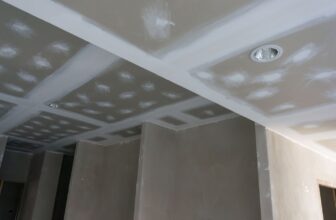
Italian Furniture and Interior Design Trends

Italy has long been known for its sense of style in furniture and interior design. From sleek modern designs to ornate antique pieces, Italian furnishing adds a touch of elegance and luxury to any space. As we move into 2024, several key trends are emerging in Roman furniture and décor that are worth noting.
Historical Roots
Italian design finds inspiration in the rich artistic heritage of the country. Renaissance and Baroque influences manifest in ornate detailing and luxurious materials. Classical Roman and Greek motifs are evident in supporting feet and architectural shapes. Italy’s medieval and Gothic past is reflected in intricate carvings and hand-crafted accents. The legacy of master artisans through the centuries contributed to Italy’s reputation for quality woodworking.
Traditional techniques perfected generation after generation are still practiced today. While furniture evolves with the times, its foundations lie in this proud legacy of craftsmanship dating back hundreds of years. These long-standing historical roots lend authenticity and elegance to both classic and modern made-in-Italy designs.
Interior Design Trends
Minimalism
One of the biggest furniture trends is a move towards minimalism. Clean, simple lines and a lack of ornamentation and clutter are hallmarks of this look. Neutral colors like white, black, gray, and tan are predominant. The focus is on high-quality materials and functional, streamlined silhouettes. Platform beds, unadorned nightstands, and sleek credenzas exemplify this pared-down aesthetic. The minimalist style allows the beauty of the wood grains and textures to take center stage.
Sustainability
Sustainability is increasingly important to consumers, and Italian brands are taking note. Many furnishing companies are now using renewable and recycled materials and environmentally friendly manufacturing processes. Consumers can find chairs made from recycled plastic, tables crafted from reclaimed wood, and cabinets using FSC-certified timber. Using water-based finishes and low-VOC adhesives are other eco-conscious practices employed by Italian furniture makers.
Multifunctional Pieces
With smaller urban living spaces on the rise, Roman designers are creating multifunctional pieces that serve more than one purpose. Clever built-in storage space is being incorporated into seating, beds, desks, and entertainment units.

Convertible furniture allows a single piece to transform into different configurations. Tables with drop-leaf extensions maximize available surface area. The versatility of these multifunctional furnishings enables consumers to do more with less space.
Natural Materials
Italian design favors natural materials like solid wood, stone, marble, leather, and linen. Wood furnishings highlight the unique grains and textures of oak, maple, ash, and walnut. The Italians admire the veining and coloring in marble and stone surfaces and backsplashes. Leather upholstery in rich hues, paired with exposed wood frames, is luxurious. And linen is appreciated for its casual, breezy look in bedrooms and living spaces. These organic materials create a welcoming warmth.
Blending Styles
While some embrace a singular style like modern or traditional, designers are also mixing aesthetics for a more collected look. A Regency chair reupholstered in a modern print fabric demonstrates this juxtaposition. An industrial-style dining table paired with ornately carved antique chairs makes for an eclectic vignette. Combining contemporary and vintage pieces, lucite and wood, or high-shine metallics with organic textures, makes for an intriguing blend not confined to one particular style.
Statement Pieces
With open floor plans, large statement pieces help delineate space. An oversized kitchen island makes an anchor for entertaining. A substantial cabinet organizes an entryway. A room-spanning media console defines the living area. Oversized lighting fixtures and headboards act as works of art. And ornate mirrors magnify light and space. The grand scale doesn’t need to mean elaborate or ornate, though. Clean-lined credenzas and consoles make simple but substantial style statements.
Bringing Italian Style Home
If you’re inspired to bring a touch of Italy into your interiors, here are some pointers:
- Start with Statement Pieces: Begin by investing in a statement piece from an Italian furniture store. Whether it’s a luxurious leather sofa, a marble coffee table, or an intricately carved cabinet, let this piece serve as the focal point of your room.
- Accessorize Thoughtfully: The design is all about balance. Pair your furniture with complementary accessories. Soften sleek lines with plush cushions, rugs, and drapes. Use lighting to enhance the beauty of your furniture.

- Mix and Match: interior design embraces the harmonious blend of old and new. Pair your modern pieces with antique pieces or traditional art. This juxtaposition creates a layered, rich aesthetic that feels both timeless and contemporary.
- Consult Experts: If you’re unsure about your choices, don’t hesitate to seek advice. Many furniture stores offer design consultancy services. Engaging with experts can help you curate a space that’s both trendy and in line with your personal style.
Personalization and Customization
With an emphasis on quality craftsmanship, Roman furnishing lends itself well to personalization and customization. Pieces can be tailored to suit the customer’s lifestyle and aesthetic perfectly. Customizable options include finishes, fabrics, leather, hardware, and dimensions. Companies are also open to designing fully bespoke items based on the client’s vision and specifications.
The storage, layout, and functionality of a piece can be modified to maximize usability. Italian artisans have the talent to bring unique furniture concepts to life. Personal touches and custom details create furnishings as individual as their owners. This niche market allows consumers to own unique made signature pieces.
Smart Technology Integration
Italian designers are keeping up with the latest tech trends by integrating smart technology into their pieces. Hidden storage compartments with integrated wireless phone chargers keep devices powered and readily accessible. Digital displays and screens are being seamlessly incorporated into mirrors, cabinetry, and wall panels.
Home automation systems allow furniture pieces like lighting and motorized window coverings to be controlled remotely. Voice assistant compatibility enables hands-free control of these connected appliances and electronics. The Italians are adept at fusing technological conveniences with their signature style in cutting-edge yet cohesive ways. Smart furniture shows innovation while retaining the Roman flair for fashionable interiors.
The Italian approach to furniture and interior décor favors quality craftsmanship, timeless aesthetics, and livability. As we move through 2024, keep an eye out for pieces reflecting minimalism, sustainability, versatility, and authenticity – trends that align with a casually elegant Italian lifestyle.



















































































